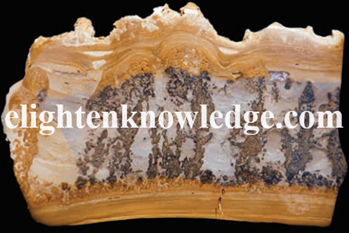Common Infections of the Skin

Common Infections of the Skin
Infections of the skin may be grouped into three types: bacterial, fungal, and viral.
Common Bacterial Infections
Impetigo
- Impetigo is a skin infection that is commonly seen on the face, particularly in the lower part of the face, but it can occur anywhere.
- This disease is characterized by large, open, weeping lesions.
- They look like large sores, similar to acne, except that impetigo lesions weep and appear damp.
- The lesions can range in size.
- Impetigo is frequently seen in children and is extremely contagious.
- Impetigo is caused by staphylococcus
- The disease is treated by the use of antibiotics.
Folliculitis
- Folliculitis is a bacterial infection of the hair follicle.
- The infection results in irritation and is characterized by multiple pinpoint irritations around the pore openings.
- Pseudofolliculitis is caused by irritation from shaving.
- It also appears as irritated follicles but is not usually infected.
- Ingrown hairs are the main cause of pseudofolliculitis, which is seen frequently in the beard area of male clients, especially the neck.
- A more severe infection of the hair follicle is called a furuncle, also known as a boil.
- Large boils often result in abscesses and are referred to as carbuncles.
- Folliculitis, furuncles, and carbuncles are treated with antibiotics.
- If a furuncle or carbuncle bursts on the inside of the lesion, the bacteria may enter the bloodstream, causing septicemia, also known as blood poisoning.
- Septicemia is characterized by a red erythemic line running from the source of the primary infection is extremely serious and should be treated immediately by a physician.
- Cellulitis is a deep infection of the dermis, caused by streptococcus.
- A severe form of cellulitis is called erysipelas, also known as Anthony’s Fire.
- Again, this condition is extremely serious and should be seen immediately by a physician.
Fungal Skin Infections
There are a number of fungal and yeast infections of the skin.
Fungal and yeast infections are called mycoses.
Tinea versicolor
- Tinea versicolor is sometimes called sun fungus.
- It is often seen on the backs and chests of persons who are tan.
- Tinea versicolor inhibits the production of melanin in the skin, which results in its appearance as white patches.
- It is not actually directly related to sun exposure but is often seen on tanned persons because the skin will not tan in the areas where tinea versicolor is active.
- The disease is easily treated with the use of antifungal prescription medications.
Also, Tinea pedis
- Tinea pedis, commonly known as athlete’s foot, is a fungal infection of the skin on the foot.
- The disease is characterized by severe itching and scaling, particularly on the sole of the foot.
- Again, tinea pedis is easily treated by the use of antifungal prescription medications.
Tinea corporis
- Tinea corporis is better known by the public as ringworm.
- It can occur in any area of the body and presents itself as a ring-like lesion.
Candidas
- Candidas are yeast infections.
- They can cause a variety of skin infections, including perleche, also known as cheilitis, which appears as softened and sometimes reddened cracks in the corners of the mouth.
- Oral thrush, seen often in infan ts and persons with suppressed immune systems, such as patients with AIDS and diabetes, is a yeast infection of the mouth characterized by white patches inside the mouth.
Viral Skin Infections
Herpes
- Herpes refers to a group of viruses.
- Herpes simplex is the cause of common cold sores, which generally appear on or around the mouth and often appear as oozing red ulcers.
- They are very contagious and should be treated by a physician.
- Facial treatments should be avoided for clients with active lesions.
- Certain facial treatments, such as chemical peels, have been known to cause a flare-up of the herpes virus.
Herpes zoster (shingles)
- Herpes zoster, better known as shingles, is caused by the same virus that causes chicken pox.
- Herpes zoster is harboured by the nervous system and generally follows a pattern along the nerves in the skin.
- The lesions of herpes zoster look like multiple red blisters.
- Subjective symptoms may include burning, tingling, or numbness, and severe cases can result in extreme pain.
- Minor infections can be only a nuisance, and the disease subsides by itself.
- However, the infection can reoccur and, in some cases, causes scarring and pain due to nerve inflammation.
- There is no cure for herpes zoster, although some prescriptions are helpful in controlling it.
- Herpes zoster is another infection that may be a problem in immunosuppressed individuals, such as patients with AIDS.
Molloscum contagiosum
- Molloscum contagiosum is a viral infection frequently seen on the faces of children.
- It appears as groups of small, flesh-coloured papules that often resemble milia but are in groups or clusters and are hard to the touch.
- They must be treated by a physician.
Warts
- The most frequent viral lesions seen are warts.
- Warts are caused by a variety of viruses known as papillomaviruses or verrucae.
- Wart treatment varies with the lesion, including topical acid therapy using salicylic acid or trichloroacetic acid.
- Other dermatologic treatments include freezing the lesions with liquid nitrogen or cautery with an electric needle.
- Warts are contagious, especially to the same individual, and they can be spread to another area of the body easily.
- Warts may be seen by the aesthetician on the face, feet, and hands, especially the nails, and should be referred to a dermatologist for treatment.
Pityriasis rosea
- Pityriasis rosea is a patchy, red, rash-like disorder.
- It can occur anywhere on the body but is frequently seen on the trunk.
- Groups of patches may develop.
- Many outbreaks resemble the pattern of a Christmas tree on the trunk.
- Its origin is unknown, and there is no real cure for pityriasis rosea, but it usually subsides after a few weeks.
- Itching associated with infection can be treated with topical prescription steroid creams.









Hi there, just became alert to your blog through Google, and found that it is really informative.
I am gonna watch out for brussels. I will appreciate if you
continue this in future. Numerous people will be benefited from your writing.
Cheers!
Hey people!!!!!
Good mood and good luck to everyone!!!!!
Hey people!!!!!
Good mood and good luck to everyone!!!!!